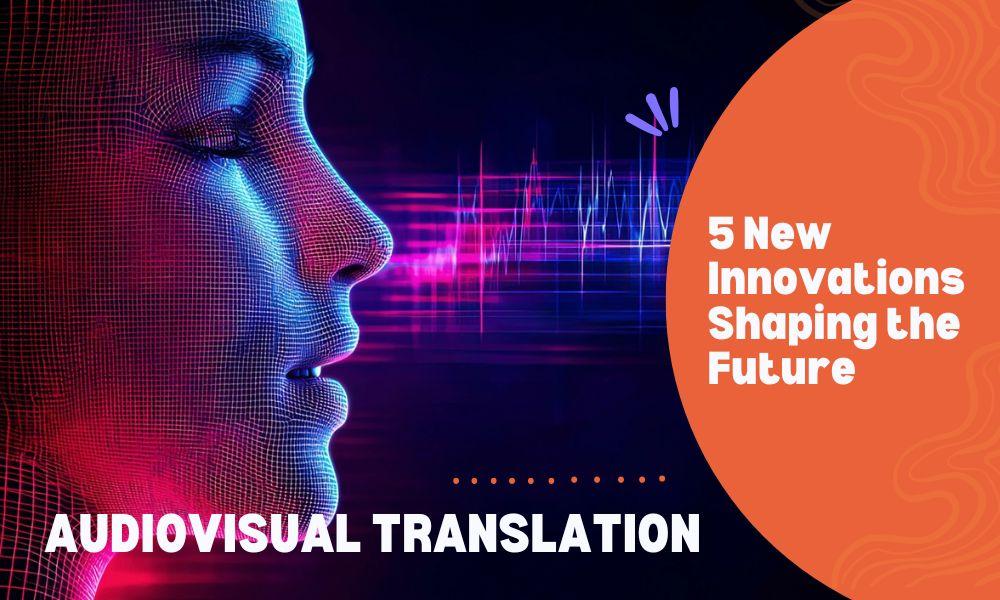The rapid expansion of global media consumption has made audiovisual translation (AVT) a cornerstone of the entertainment and communication industries. As the demand for localized content surges, the field of AVT is undergoing a revolution powered by cutting-edge innovations. Companies like Powerling are at the forefront of these advancements, ensuring content transcends linguistic and cultural barriers with unparalleled precision and efficiency.
Here are five innovations shaping the future of audiovisual translation:
1. AI-Powered Subtitling and Dubbing
Artificial Intelligence (AI) has revolutionized how subtitling and dubbing are managed. Tools driven by AI can now transcribe and translate dialogue in real time, significantly reducing turnaround times.
These tools use machine learning algorithms to:
- Recognize speech patterns with astonishing accuracy.
- Provide context-aware translations to preserve meaning and tone.
- Sync subtitles and dubbed audio with visual content.
The latest AI-driven dubbing solutions even mimic voice tone and inflection, offering near-human voiceovers. This is particularly useful for e-learning platforms, international corporate training videos, and global entertainment releases.
2. Neural Machine Translation (NMT) in AVT
Neural Machine Translation has set a new benchmark in AVT by enabling high-quality translations that account for context and nuance. Unlike traditional machine translation, NMT adapts dynamically to diverse language pairs and complex sentence structures.
Key benefits include:
- Enhanced accuracy in idiomatic and cultural translations.
- Improved fluency, reducing the need for extensive post-editing.
- Compatibility with less commonly spoken languages.
For example, Powerling’s integration of NMT into audiovisual workflows ensures that localized versions of films, TV shows, and corporate videos resonate with their target audiences while staying true to the source material.
3. Automatic Speech Recognition (ASR) Technology
Automatic Speech Recognition (ASR) is redefining how audio content is transcribed and translated. By analyzing speech directly from audio tracks, ASR eliminates the need for manual transcription, a traditionally time-intensive task.
Advancements in ASR have led to:
- Real-time transcription with high accuracy.
- Multilingual transcription capabilities, ideal for content with mixed-language dialogue.
- Integration with translation tools for seamless workflows.
These developments are transforming industries like news broadcasting, where fast and accurate subtitling is essential, and global marketing campaigns, where multilingual ads are becoming standard.
4. Immersive Media Localization
With the rise of Virtual Reality (VR) and Augmented Reality (AR), localization has extended beyond traditional screens. Immersive media introduces unique challenges, as it requires translating not just words but entire experiences.
Innovative solutions include:
- Spatial audio translation to ensure dialogues and sound effects align with user movements.
- Text overlay adjustments to fit dynamic, 360-degree environments.
- Cultural adaptation of immersive narratives for global audiences.
For instance, a VR documentary being localized would involve translating voiceovers, subtitles, and even interactive user instructions to create a seamless experience for viewers worldwide.
5. Blockchain for AVT Workflows
Blockchain technology, often associated with cryptocurrencies, is now finding applications in AVT. By providing a transparent and secure record of translation workflows, blockchain enhances efficiency and trust.
Applications of blockchain in AVT include:
- Verifying translator contributions to ensure accountability.
- Safeguarding intellectual property rights for localized content.
- Streamlining payment processes for global AVT professionals.
This innovation is particularly useful in collaborative projects involving multiple stakeholders, such as co-produced films and international advertising campaigns.
Why These Innovations Matter
The future of audiovisual translation lies at the intersection of technology, creativity, and cultural intelligence. By embracing these innovations, translation companies like Powerling are better equipped to meet the needs of global audiences.
From AI-powered tools to immersive media localization, these advancements ensure that translated content is not just accurate but also engaging and culturally relevant. As the world continues to consume media across languages and borders, the role of AVT will only grow more significant - helping stories, messages, and ideas connect with people everywhere.
Powerling: Your Partner in the Evolving Landscape of Audiovisual Translation
Powerling stays ahead of the curve by integrating these cutting-edge technologies into its workflows. Whether you need subtitles for a global film release or dubbing for multilingual training videos, we are here to ensure your content speaks to every audience, everywhere.
Let us help you shape the future of audiovisual storytelling - one innovation at a time. Reach out to Powerling today.

